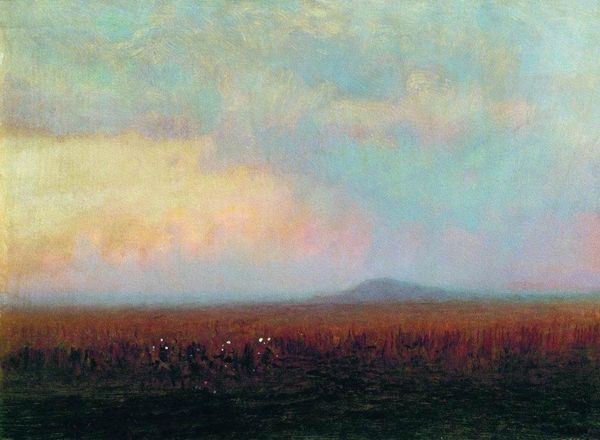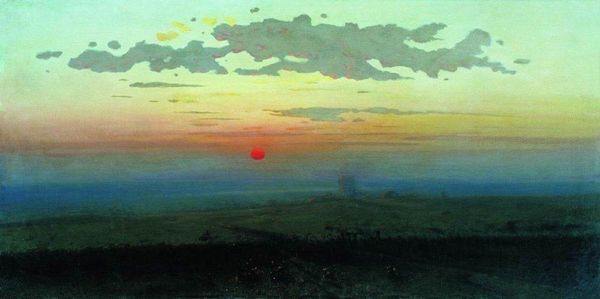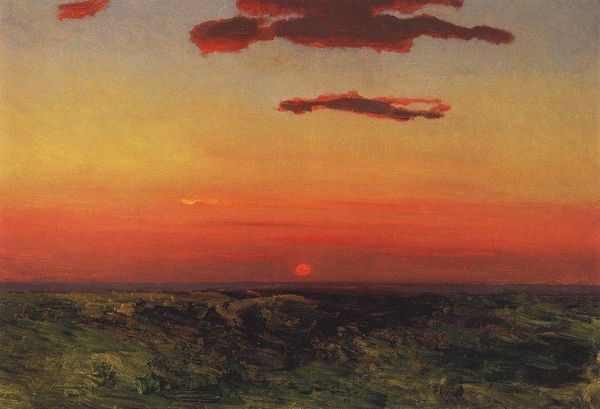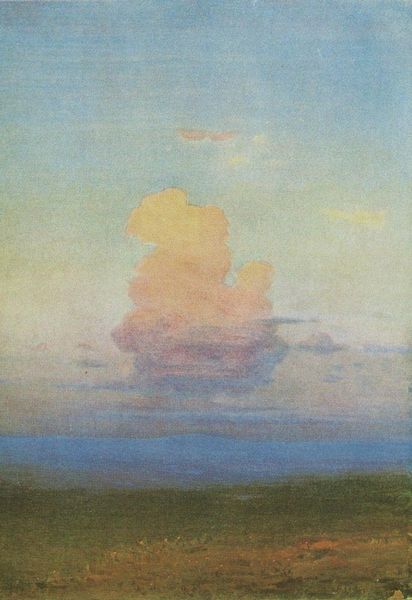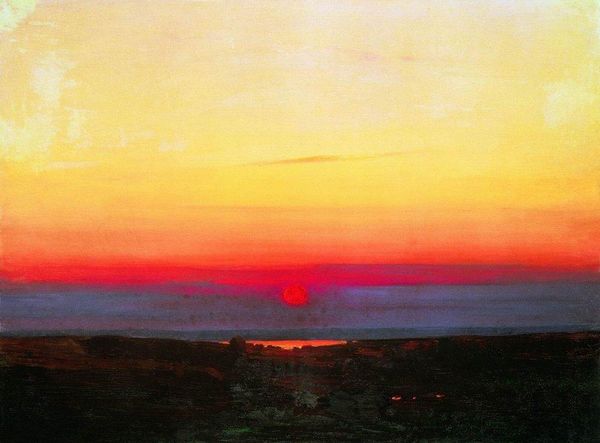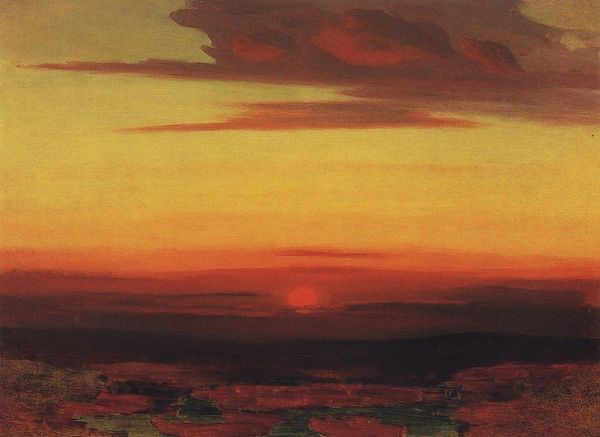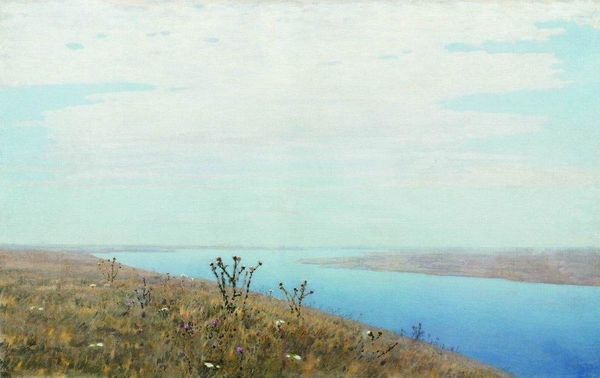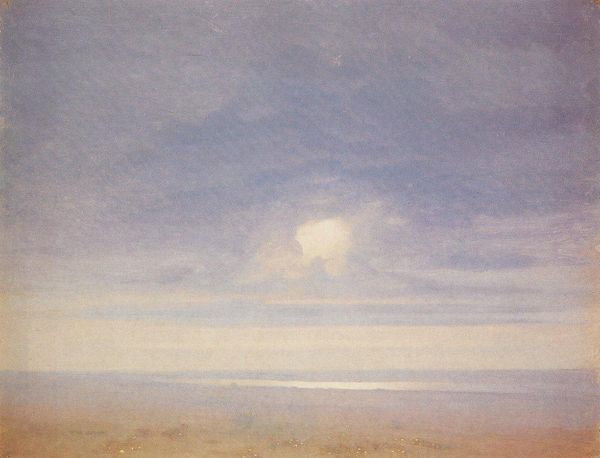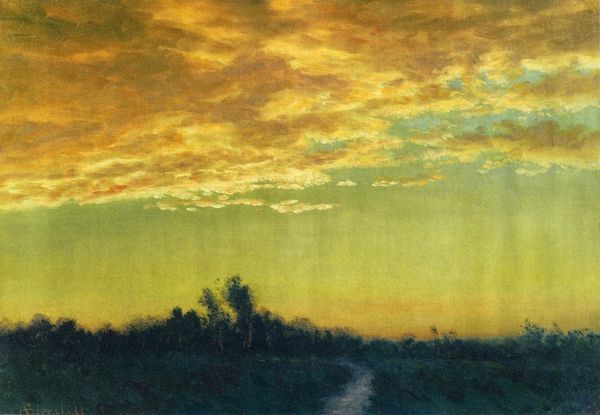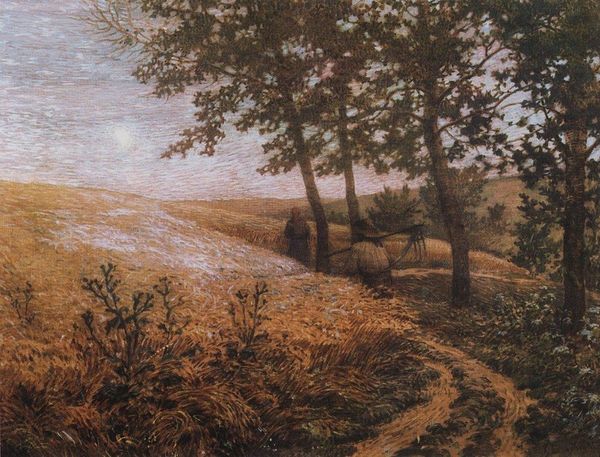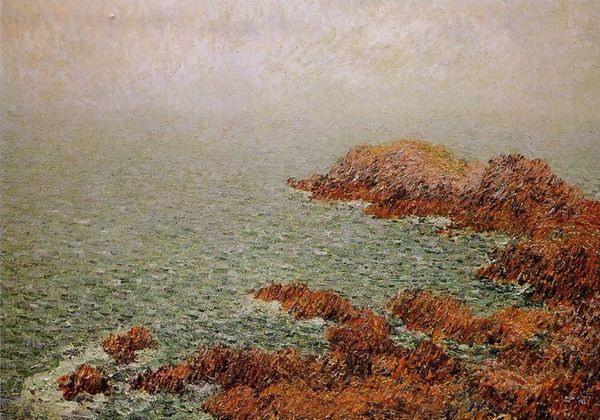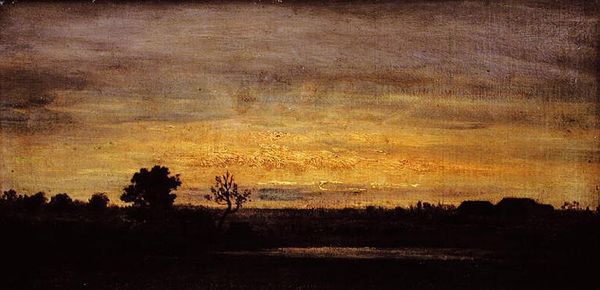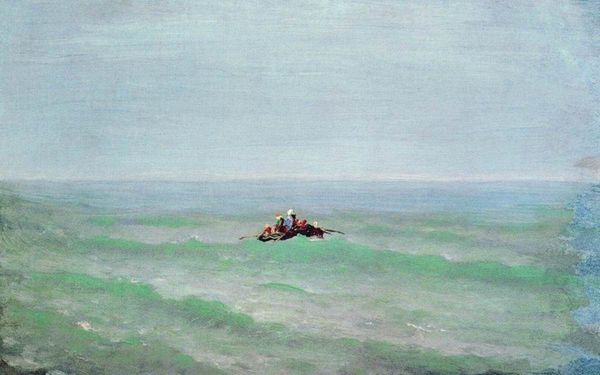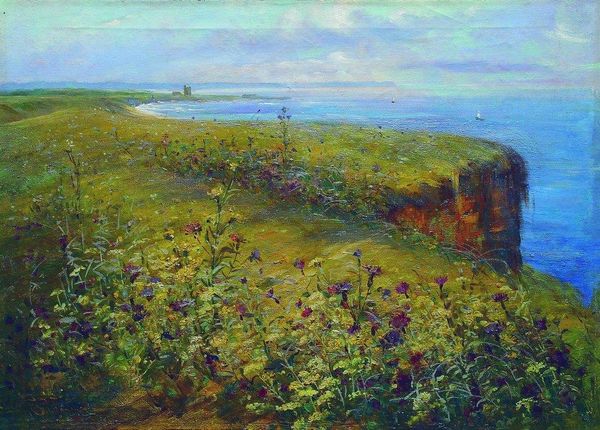
Copyright: Public domain
Editor: Here we have Arkhyp Kuindzhi’s "Dnieper in the Morning" from 1881, an oil painting rendering a sweeping landscape. I'm immediately struck by the vastness and stillness of it, like time is suspended in this early morning haze. What do you see in this piece? Curator: The ethereal quality you mention isn't accidental. Kuindzhi wasn't merely painting a landscape; he was crafting an idealized vision, tapping into a romantic nationalism prevalent in the late 19th century. The Dnieper River wasn't just a waterway; it was the lifeblood of Ukraine, a symbol of its history and cultural identity. What do you make of that light, almost a spiritual glow? Editor: I guess I thought the lighting was just capturing a specific time of day, but you're suggesting it's something more symbolic? Curator: Absolutely. Consider the sociopolitical context: the Russian Empire’s policies of cultural assimilation targeting Ukraine. By idealizing the Dnieper, Kuindzhi was subtly asserting a distinct Ukrainian identity, a form of resistance through beauty. The river becomes a powerful metaphor. Do you think it still resonates today? Editor: Knowing that context, it really does. I hadn’t thought about how a landscape could be a political statement, or an affirmation of cultural identity. Curator: Precisely! And the “realism” applied here still evokes a sentiment. It goes to show how deeply art is entrenched within the fabric of history and society. It urges us to critically engage with narratives presented as universal or apolitical. Editor: Wow, I'll never look at a landscape the same way again. Thank you! Curator: My pleasure. Always remember, the personal *is* political, and the landscape often embodies that tension.
Comments
No comments
Be the first to comment and join the conversation on the ultimate creative platform.
